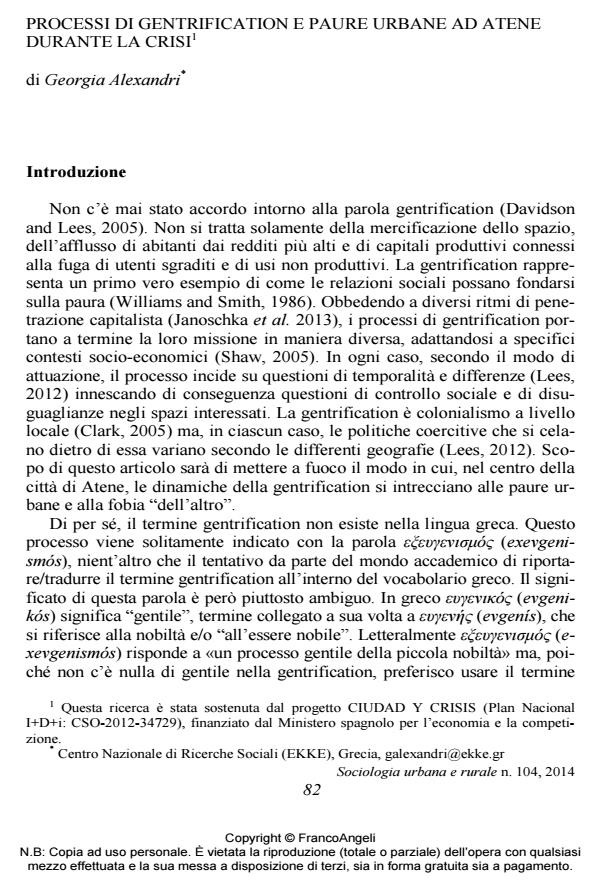Processi di gentrification e paure urbane ad Atene durante la crisi
Titolo Rivista SOCIOLOGIA URBANA E RURALE
Autori/Curatori Georgia Alexsandri
Anno di pubblicazione 2014 Fascicolo 2014/104
Lingua Italiano Numero pagine 15 P. 82-96 Dimensione file 240 KB
DOI 10.3280/SUR2014-104006
Il DOI è il codice a barre della proprietà intellettuale: per saperne di più
clicca qui
Qui sotto puoi vedere in anteprima la prima pagina di questo articolo.
Se questo articolo ti interessa, lo puoi acquistare (e scaricare in formato pdf) seguendo le facili indicazioni per acquistare il download credit. Acquista Download Credits per scaricare questo Articolo in formato PDF

FrancoAngeli è membro della Publishers International Linking Association, Inc (PILA)associazione indipendente e non profit per facilitare (attraverso i servizi tecnologici implementati da CrossRef.org) l’accesso degli studiosi ai contenuti digitali nelle pubblicazioni professionali e scientifiche
Nella città di Atene, la crisi economica ha provocato un rallentamento dei processi di gentrification. Nella prima parte di questo articolo si introdurranno le spazialità produttrici di gentrification nella capitale greca. Nella seconda viene analizzato il modo in cui le paure nel centro della città costituiscono il Cavallo di Troia di tali processi nella zona di Metaxourgio qui presa in esame.
Parole chiave:Atene, crisi, gentrification, paure urbane, trasferimento, ingiustizie socio- spaziali.
Georgia Alexsandri, Processi di gentrification e paure urbane ad Atene durante la crisi in "SOCIOLOGIA URBANA E RURALE" 104/2014, pp 82-96, DOI: 10.3280/SUR2014-104006